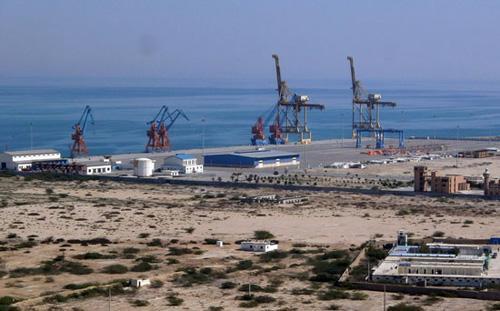The China-Pakistan Economic Corridor (CPEC) is an example for the rest of the world. CPEC is one out of six planned corridors under the Belt and Road Initiative (BRI) launched by China in 2013, said Zamir Ahmed Awan, professor at the National University of Sciences and Technology in Islamabad, Pakistan in his article Beijing, Islamabad committed to making flagship CPEC project example for world.
CPEC has been declared a flagship project, and the governments of both countries are giving it highest priority. Both nations are committed to making it a success. Whatever the difficulties or hurdles, both sides are committed to overcoming them and creating an example for the rest of world, the professor added.
The full text of the article is as follows:
The China-Pakistan Economic Corridor (CPEC) is an example for the rest of the world. CPEC is one out of six planned corridors under the Belt and Road Initiative (BRI) launched by China in 2013. These corridors include the China-Mongolia-Russia Economic Corridor (CMREC), New Eurasian Land Bridge (NELB), China-Central Asia-West Asia Economic Corridor (CCWAEC), China-Indochina Peninsula Economic Corridor (CICPEC), China-Pakistan Economic Corridor (CPEC), and Bangladesh-China-India-Myanmar Economic Corridor (BCIMEC).
All of these economic corridors are very well conceived and planned. The importance of each corridor is undeniable. Upon completion of all these corridors, the world will be transformed and enter into a new era. Global economic patterns will change and trade will take on a new shape.
However, five of these corridors pass through more than two countries, and it is understood that the more countries involved, the more difficult it becomes due to cultural barriers and variations in political and economic conditions in each country. Similarly, distance also matters; the longer the corridor, the more time and money it may take to complete.
Fortunately, CPEC is the simplest and the most feasible. It is a project jointly built by China and Pakistan, so it has fewer countries involved compared to the other five corridors. The 3,000-km-long corridor starts from China's Kashgar and ends at Pakistan's Gwadar, the shortest distance among all the corridors. Above all, the relationship between China and Pakistan is ideal, and there is little disagreement between these two countries. In fact, China and Pakistan support each other on all issues at the domestic, regional and global level. There exists a complete harmony.
Due to all of these reasons, CPEC has been declared a flagship project, and the governments of both countries are giving it highest priority. Both nations are committed to making it a success. Whatever the difficulties or hurdles, both sides are committed to overcoming them and creating an example for the rest of world.
To date, the people of Pakistan are enjoying the fruits of early harvest projects under CPEC. With the launch of CPEC, Pakistan's GDP improved from 4.7 to 5.5. It was a big jump as the nation has faced many complex issues over the last 4 decades. The country was an energy deficient nation and faced a shortage of electricity. There was load-shedding for several hours on a daily basis. But under CPEC's early harvest projects, around 10,000 megawatts of electricity were added to the national grid. Load-shedding minimized and almost vanished from the big cities of Pakistan.
There are a few other power generation projects at an advanced stage of completion and expected to be completed by 2020. It is expected that Pakistan will face a smaller gap between supply and demand of electricity once all projects are completed in the next few years.
The laying of optical fiber lines between China and Pakistan is another advanced stage project, and internet speeds will be improved greatly upon its completion. This will revolutionize the IT industry in Pakistan. It will also reduce dependence on sea-bed cables connecting Pakistan with the rest of the world. Due to damage to undersea cables, which are difficult to repair quickly, Pakistan has been sporadically cut off from the rest of world.
A network of roads has been completed across Pakistan, and many more are under construction or in the pipeline. A strong network of roads has made Pakistan very well connected internally. It also has helped to improve connectivity and ultimately enhance business activities. Road networks have contributed to the nation's socioeconomic development.
The country's railway system is also slated for a complete revamp. The Karachi-Peshawar Railway Line project, also referred to as ML-1, is in the advanced stage of finalization and may be initiated soon. Rail will become the cheapest and quickest mode of transportation for passengers and cargo in Pakistan in the near future.
Fast-track industrialization is also expected, as special economic zones (SEZs) are being launched soon. There are nine SEZs in total, three of which are almost ready to be launched: Rashakai SEZ, M-3 Industrial Zone in Faisalabad and Dhabijee Industrial state in Sindh. The SEZs will rapidly change Pakistan's fate.




 A single purchase
A single purchase









